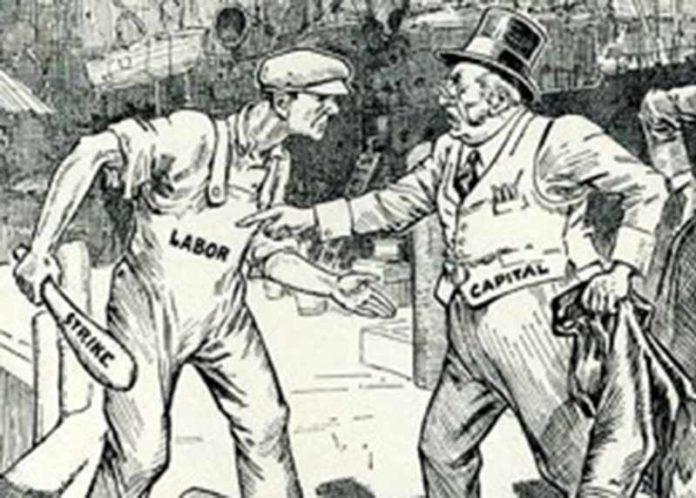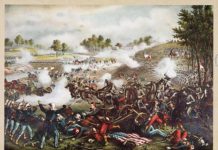1916 was an election year, producing a 62 percent turnout, one of the highest in history. The election saw Woodrow Wilson reelected, defeating Charles Evans Hughes, although in several state returns Wilson’s margin of victory was less than four percent. The election demonstrated that World War I, which had been raging since August 1914, was on many minds. It would be the last year of innocence before the war drums beat once again and the new century forced a redefinition of the U.S. presence in the world. Despite this, daily life continued unaltered, in some cases paving the way toward a different society. For many groups, however, full equality was a long journey into the future.
A Changing United States
Both Jack London and Henry James died in 1916 but a new breed of writers was making their way into the American psyche. Eugene O’Neill, acclaimed as one of the nation’s greatest dramatists, wrote “Bound East for Cardiff” while Theodore Dreiser, author of the ground-breaking novel Sister Carrie, contended with censors over newly written material. Despite the popularization of Jazz, Victorian morality still reigned, yet this did not stop Margaret Sanger from opening the first birth control clinic. It was the year bandleader Harry James and Dinah Shore were born.
The automobile was changing the travel habits of Americans and in 1916 the Thomas B. Jeffery Company in Kenosha, Wisconsin offered consumers an enclosed sedan good for “year-round motoring” at a cost of $1165.00 It was also the year Norman Rockwell sold his first two Post magazine covers, at the age of only twenty-two. Neither cover featured a war image. In Hollywood, D. W. Griffith finished Intolerance, an epic silent film with strong religious and ethical overtones.
The Battle Between Labor and Business Continued Despite Progressive Efforts
American workers were still battling for shorter hours and higher wages, even as the Adamson 8-Hour Act addressed the concerns of railroad workers. Despite the changes in social perceptions as seen in the popular literature and in the arts, domestic problems included “Pancho” Villa’s incursion into southern U.S. territory and the blowing up of a New Jersey munitions plant by German agents, an action that damaged the Statue of Liberty. and helped to solidify public opinion against Imperial Germany.
The progressive spirit, however, was still pervasive, proven, in part, by President Wilson’s nomination of Louis Brandeis to the U.S. Supreme Court. Brandeis, famously known for his unorthodox evidence in Muller v Oregon (1908), was the first Jew appointed to the high court, serving well into the FDR administration.
America’s Domestic Problems in 1916
But the calamities of Europe overshadowed any notion of carefree existence and change. While Paris was bombed by the first German Zeppelin raid, a strike by steel workers in Pittsburgh highlighted on-going labor disputes. Robert Minor’s drawing Pittsburgh, published in The Masses (1916), depicted a worker bent backward from the thrust of a bayonet. It was powerful and ironic that the worker was killed by a tool his own work probably manufactured.
Another pro-labor picture in the 1916 publication, Girls Wanted, coincided with the release of a public report detailing the findings in the investigation of the 1911 Triangle Shirtwaist Company fire. Henry Glintenkamp’s seemingly innocent picture featured three young women huddled in conversation before the ruins of a building. The picture commented on the tragedy of the fire, child labor, and the exploitation of women in the workforce. 1916, however, witnessed the first woman elected to the U.S. Congress: Jeanette Rankin, Republican from Montana.
In the South, segregation was still the rule, but discrimination existed in the North as well. An October 7, 1916 item in the Cleveland Advocate refers to two “ill-kept Colored men” denied entrance to the Stillman Theater. “We do not call this discrimination,” the writer comments, “but rather an effort to exclude from the theater patrons whose deportment…made them undesirables.” The writer used the New Testament analogy of the parable about the man who wasn’t wearing a wedding garment when invited to the feast.
The Promise and Hope of Peace on Earth and Goodwill toward Men
As 1916 drew to a close, the chimes of New York’s Old Trinity Church began at ten minutes to midnight. Thousands gathered in the hope that the New Year would bring peace in Europe. Elsewhere, Secretary of War Baker expressed “profound gratitude” that the United States had, “preserved both its peacefulness and its honor.” (New York Times, December 31, 1916) Peace would also affect the U.S. economy: the 1916 credit balance with belligerent countries was $3,097,000,000.
In retrospect, 1916 was indeed a year of final innocence, despite those groups struggling to achieve their part of American democracy. The war came in 1917, sending American boys to the bloody trenches of Europe. While isolationism prevailed after the war, the U.S. would forever be entangled in alliances and focused on global actions impacting American security and prosperity. 1916 was the last year Americans could look within, without the fear of global threats.
Sources:
- Meirion & Susie Harries, The Last Days of Innocence: America At War, 1917-1918 (Random House, 1997)
- Jeff Nilsson, “Enemy Agents Strike New York – In 1916,” The Saturday Evening Post, July 7, 2010
- Library of Congress archives
- Page Smith, America Enters the War: A People’s History of the Progressive Era And World War I (McGraw-Hill Book Company, 1985)








